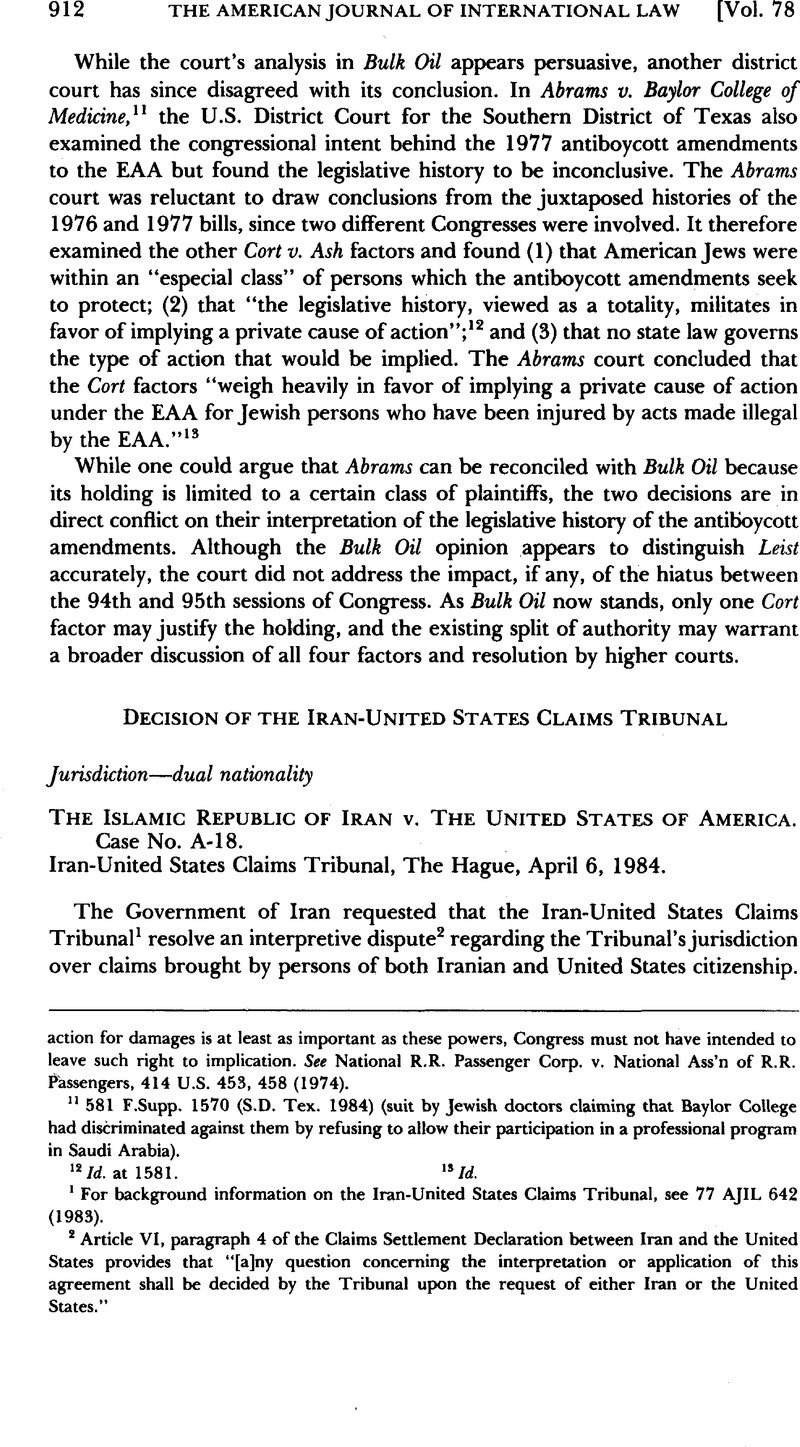No CrossRef data available.
Article contents
Decision of the Iran-United States Claims Tribunal
Published online by Cambridge University Press: 16 May 2017
Abstract

- Type
- Judicial Decisions
- Information
- Copyright
- Copyright © American Society of International Law 1984
References
1 For background information on the Iran-United States Claims Tribunal, see 77 AJIL 642 (1983).
2 Article VI, paragraph 4 of the Claims Settlement Declaration between Iran and the United States provides that “[a]ny question concerning the interpretation or application of this agreement shall be decided by the Tribunal upon the request of either Iran or the United States.”
3 Awards were issued by Chamber Two of the Tribunal in two earlier cases raising the dual nationality issue. See Esphahanian v. Bank Tejarat, AWD 31–157–2, summarized in 77 AJIL 646 (1983); Golpira v. The Islamic Republic of Iran, AWD 32–211–2.
4 Apr. 12, 1930, 179 LNTS 89.
5 The Tribunal observed that most of the disputes before the Tribunal involved a private party on one side and a government on the other, and many involved primarily issues of municipal law and general principles of law. “In such cases it is the rights of the claimant, not of his nation, that are determined by the Tribunal.” The Tribunal contrasted this situation with that of espousal of claims under international law.
6 (Second Phase) (Liechtenstein v. Guat.), 1955 ICJ Rep. 4, 22 (Judgment of Apr. 6).
7 (U.S. v. Italy), 14 R. Int’l Arb. Awards 236, 247 (1955).
8 See, e.g., De Visscher, , Cours general de droit international public, 136 Recueil des Cours 3, 162–63 (1972 II)Google Scholar; Rousseau, C., Droit International Public 112 (Précis Dalloz 1976)Google Scholar; 1 Batiffol, H. & Lagarde, P., Droit International Privé, No. 82 (7th ed. 1981)Google Scholar.
9 The Tribunal, however, added an “important caveat”: that in cases “where the Tribunal finds jurisdiction based upon a dominant and effective nationality of the claimant, the other nationality may remain relevant to the merits of the claim.” In this respect, it should be noted that by allowing the chambers to take into account a dual national’s Iranian citizenship for purposes of the merits, the Tribunal has left open the question of whether the taking of a dual national’s property is compensable.
10 The dissent states in part:
The present Decision is yet another clear manifestation of a bad faith interpretation rendered by this Tribunal. The composition of the so-called neutral arbitrators, itself the result of the imposed mechanism of the UNCITRAL Rules, is so unbalanced as to have made the Tribunal lose all credibility to adjudicate any dispute between the Islamic Republic of Iran, as a Third World revolutionary country, and the United States, as the symbol of the world capitalism.




